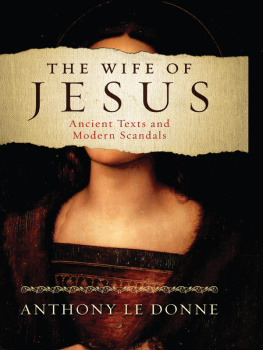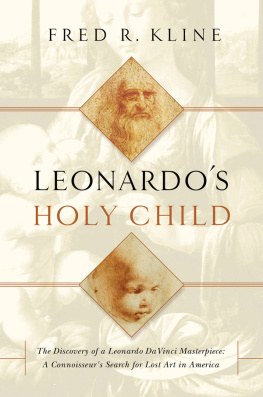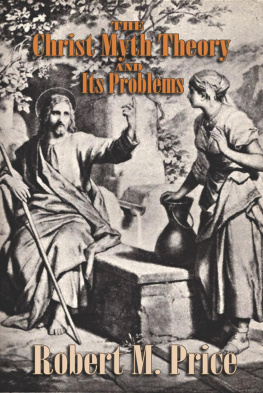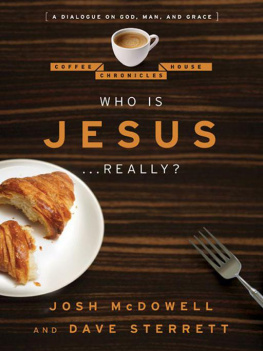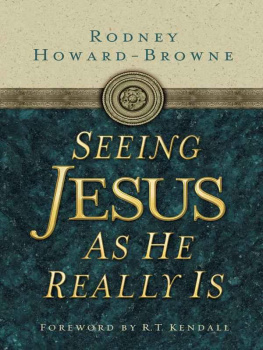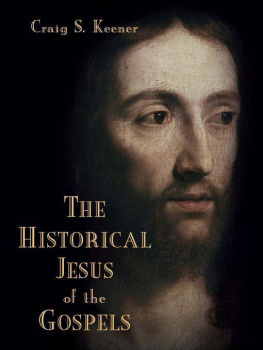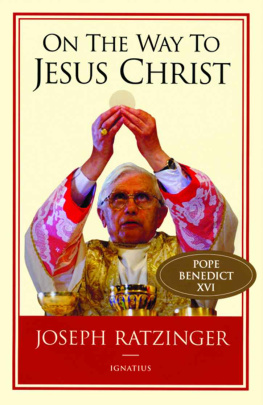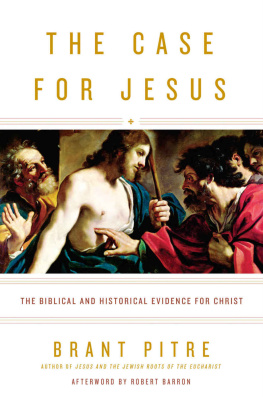FOUR PORTRAITS,
ONE JESUS

ZONDERVAN
FOUR PORTRAITS, ONE JESUS
Copyright 2007 by Mark L. Strauss
All rights reserved under International and Pan-American Copyright Conventions. By payment of the required fees, you have been granted the non-exclusive, non-transferable right to access and read the text of this e-book on-screen. No part of this text may be reproduced, transmitted, down-loaded, decompiled, reverse engineered, or stored in or introduced into any information storage and retrieval system, in any form or by any means, whether electronic or mechanical, now known or hereinafter invented, without the express written permission of Zondervan.
ePub Edition August 2009 ISBN: 978-0-310-86615-2
Requests for information should be addressed to:
Zondervan, Grand Rapids, Michigan 49530
Library of Congress Cataloging-in-Publication Data
Strauss, Mark L.
Four portraits, one Jesus : an introduction to Jesus and the Gospels / Mark L. Strauss.
p. cm.
Includes bibliographical references and index.
ISBN-13: 978-0-310-22697-0
1. Bible N.T. Gospels Criticism, interpretation, etc. 2. Jesus Christ Person and offices. I. Title.
BS2555.52.S86 2007
226'.061 dc22
2005034280
All maps by Mosaic Graphics. Copyright 2006 by Zondervan.
All Scripture quotations, unless otherwise indicated, are taken from the Holy Bible: New International Version. NIV. Copyright 1973, 1978, 1984 by International Bible Society. Used by permission of Zondervan. All rights reserved.
All rights reserved. No part of this publication may be reproduced, stored in a retrieval system, or transmied in any form or by any means electronic, mechanical, photocopy, recording, or any other except for brief quotations in printed reviews, without the prior permission of the publisher.
Composition by Tracey Walker and Sherri Hoff man
07 08 09 10 11 18 17 16 15 14 13 12 11 10 9 8 7 6 5 4 3 2 1
Contents
Contents


Congratulations! You are about to embark on a study of the most important person in human history. To Christian believers, the Gospels record the greatest story ever told, the events of the life, death, and resurrection of Jesus, the Messiah. They narrate the climax and turning point of human history, when God acted decisively to achieve salvation for people everywhere. To study the Gospels is to study the foundation of Christianity.
Even to those who do not follow Jesus as their Lord, the Gospels serve as the primary source documents for information about the most influential life ever lived. Jesus of Nazareth has been the topic of more books, movies, discussions, and debates than any person in history. Even our calendar is dated from the beginning of this mans life. Millions have dedicated their lives to serving him. Countless thousands have died as martyrs for his cause.
Great good has been done in his name, from feeding the poor, to educating children, to providing medical aid and developmental assistance to impoverished nations. Great evil has also been done, from crusades of conquest, to the slaughter of innocent people, to the torture of those labeled heretics.
But who was this man Jesus, and how did his movement begin? In this textbook, we will examine the nature and content of the four Gospels, the primary source documents on the life and ministry of Jesus of Nazareth. Where did these books come from? What was their purpose? What can they tell us about Jesus? These are the questions we will seek to answer.
This book is an introductory survey. Part 1 (chaps. 1 3) provides information concerning the nature of the Gospels and methods which have been developed for their study. Part 2 (chaps. 4 6) is concerned with the historical, religious, and cultural background to the Gospels their first-century setting. Part 3 (chaps. 7 10) is a study of the four Gospels as narrative literature their content, themes, and theology. Finally, part 4 (chaps. 11 20) turns to the question of the historical Jesus, examining the Jesus quests of the last three centuries, the historical reliability of the Gospels, and the life and teachings of Jesus of Nazareth. Because this is an introductory survey, I have avoided cluttering the text with excessive footnotes. Instead, bibliographies at the end of each chapter direct the student to resources for further study.
No one approaches history as an unbiased observer, and it would be naive to assume that this textbook could be written without presuppositions or a point of view. It is appropriate, therefore, to state my own. My goal is to produce a text which is both methodologically critical and confessionally evangelical. The text is critical in that it seeks to utilize the best literary and historical tools and resources available today. I have also tried to present the data in a fair and balanced manner, without glossing over problems or selectively manipulating results. The text is evangelical in that it is written from the perspective of one who confesses Jesus as Lord, and who believes that these Gospels are not merely human documents but the inspired and authoritative Word of God. While I will seek not to let these assumptions bias a critical analysis, it is unnecessary and even inappropriate to deny them. Indeed, adopting the same evangelical mindset of the Evangelists (the Gospel writ-ers) will allow us to more fully enter their world, and to hear the gospel story as it was intended to be heard as the good news of salvation achieved through the life, death, and resurrection of Jesus the Messiah.
I am most grateful to the scholars and friends who have read through parts or all of this text and have offered many insights and suggestions, especially Frank Thielman, Gary Burge, Jeannine Brown, and Donald Verseput. Dons untimely death in 2004 was a great loss to family, friends, and New Testament scholarship in general. I am also grateful to the hundreds of students who have used the work in draft form and have served as my informal editors. Particularly noteworthy in this regard were Marci Ford, Bill Zettinger, Janice Raymond, and Mike Anderson. Finally, I want to thank those at Zondervan who labored with me to bring this work to fruition, especially Stan Gundry (who first approached me about its writing), Jack Kuhatschek, Katya Covrett, and Brian Phipps.

CHAPTER OVERVIEW
1. Four Gospels, One Jesus
2. The Synoptic Gospels and the Gospel of John
3. The Gospel Genre
4. Why Were the Gospels Written?
5. The Gospel Audiences: To Whom Were the Gospels Written?
6. Why Four Gospels?
7. Why Only Four Gospels?
8. Reading the Gospels Today
Addendum: Sources for Information about Jesus outside of the Gospels
OBJECTIVES
After reading this chapter, you should be able to:
Describe the genre of the Gospels as history, narrative, and theology.
Explain why there are four Gospels.
Explain what it means to read vertically and horizontally through the Gospels.
Discuss the benefits and potential liabilities of harmonizing the Gospels.
When my oldest son was two years old, we took him to a portrait studio to have his picture taken. Two-year-olds are a bundle of emotions, and getting them to sit still through a photo shoot is a real challenge. During that short session, my son went through a range of moods, from contentment, to laughter, to pouting, to anger, to tears. I remember getting the proofs afterward. The first showed him serenely content, smiling at the camera. In the second, he was laughing delightedly as the photographer waved a stuffed animal in his face. In the next, he was beginning to get bored and had put on a cute little pout. The fourth showed him downright angry, with a defiant just try to make me smile look on his face. By the last shot, he had dissolved into tears. The poor little guy had had enough. Which of these pictures captured my sons personality? The answer, of course, is all of them! Each one caught a different side of his multifaceted personality. Together they give us an insightful glimpse into who he is.
Next page

